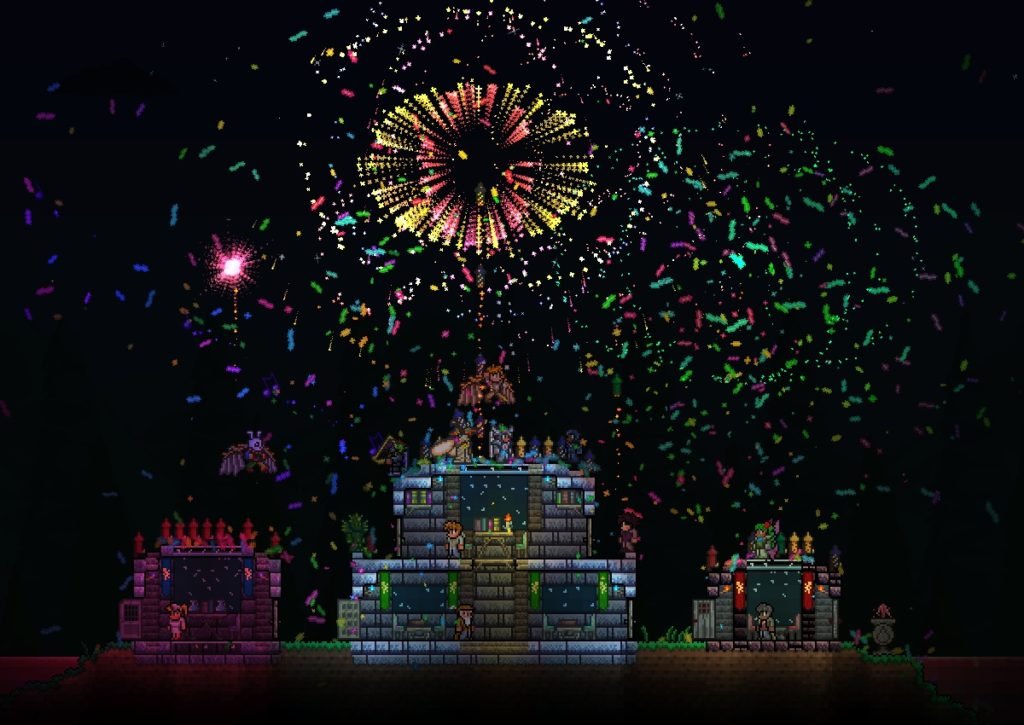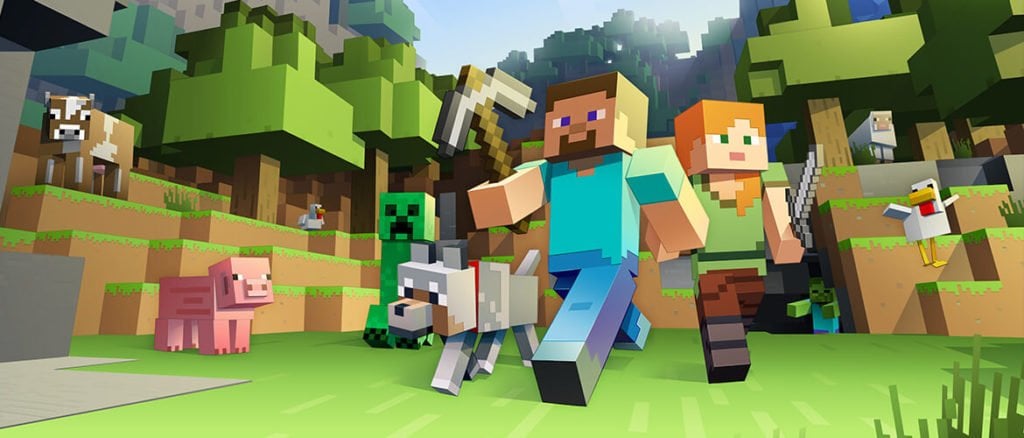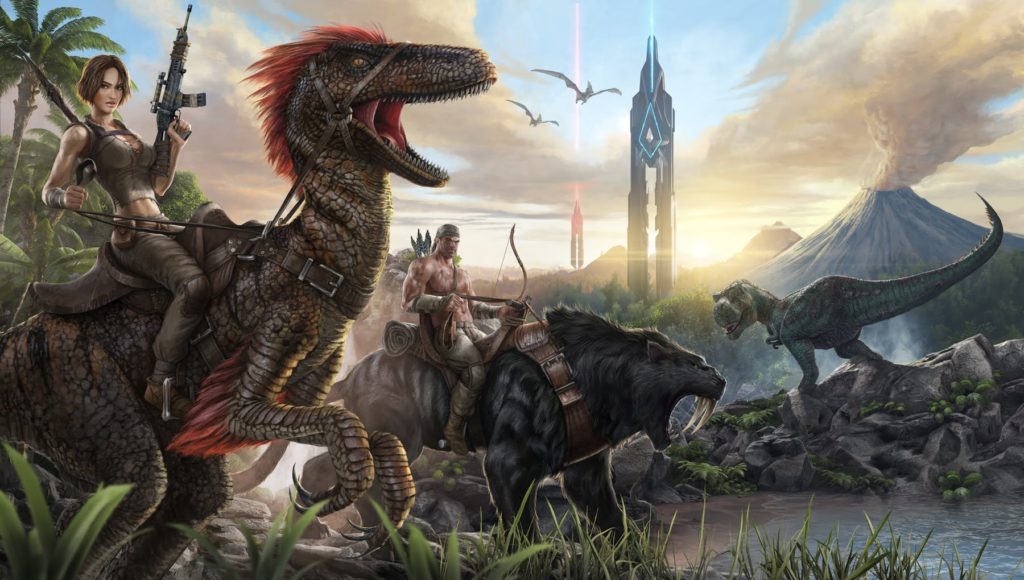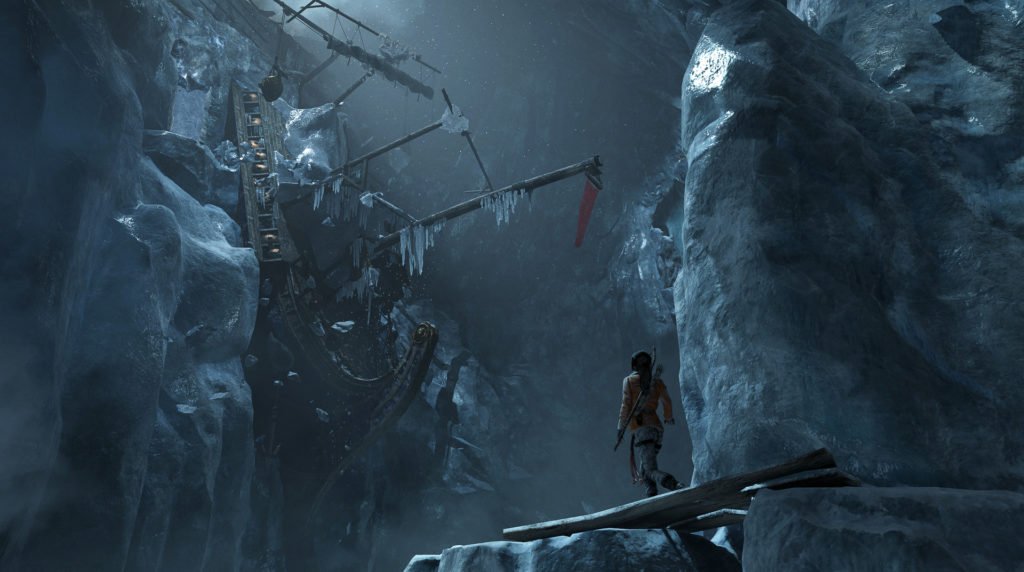Back in 2009, Markus ‘Notch’ Persson released the first version of Minecraft. The game was a survival sandbox, and would soon have it’s own company developed around it – Mojang.
In May 2011, Re-Logic released its own sandbox title, Terraria. The 2D action-adventure game was hailed by many as a clone of Minecraft that simply took away the depth of building. Yet it pushed Mojang to continue creating Minecraft and bolster the survival sandbox features in order to compete with Terraria’s adventure.

The most recognizable and high profile survival game in the world, Minecraft has sold over 25 million copies just on PC and Mac. In the past 24 hours alone, over 8,000 more copies have been sold. Nathan Adams, one of the game developers at Mojang, tweeted last year that they finally had the ability to see how many users were currently playing Minecraft. At the time, there were over 998,000 playing, and that wasn’t even “remotely close to being a peak time.”
For comparison, ARK: Survival Evolved has sold over 4 million copies PC copies through Steam since its Early Access release in 2015, according to Steamspy. Those actively playing in the last two weeks however, represent less then 30% of that player base, with a little over 670,000 having signed in to play. The daily number of gamers peaked at just over 77,000 on New Years day, but sat around 30,000-40,000 in the weeks earlier.
How we define the success of a video game is normally through sales. Although the active list of players is an important definition for the longevity of a game, the developers only get rewarded from the initial purchase (in most circumstances).
If we continue to treat games that are designed to have a long replayability as successes with initial sales, we are putting the genre in a difficult position. While survival games have room to grow, instead developers will continue to look at games that had high sales numbers and pull inspiration from there instead of innovating on their own.
In a game like Minecraft, the replayability is there for those that enjoy the LEGO-esque building aspects. With survival being optional, the game is intended to let you craft the world around you.

ARK, by contrast, is truly a survival game. You wake up on an island with dinosaurs everywhere and no memory of where you are. If you don’t get enough food and water, if you overheat or freeze, you will die. All of these factors are something you must keep an eye on while exploring the island. But even with all of this, you aren’t really given a goal in the game besides living. Once you’ve gotten the best dinosaurs, what’s the point of continuing to play?
In ARK, the first question that should come to player’s mind is “Why did I wake up on the island?” Instead, the attention is redirected to the dinosaurs. With that in mind, once you’ve gotten the best dinosaur in the game, there is no point in continuing to play the game; unless you’re interested in PvP or resetting your progress and starting again.
The survival genre, in theory, has replay value to spare. Players are usually given an open world that they can play countless hours in. But, unfortunately, many players stall out quickly. While there is the small, niche audience that keeps coming back, most of us end up dropping the game, besides returning for a patch here or there. Even the more extreme players usually continue to reset their progress to make the game fun again.
ARK: Survival Evolved was the talk of the town in 2016. Although the developers still haven’t released the full game, pushing the release back further to work on side projects, fans are eating up updates like tomorrow will never come. But ARK, at it’s core, is just about the dinosaurs, unless you’re a fan of PvP, an aspect more dependent on the community then it is on the developers.

With most survival games, an open world is considered a must. The ability to go where you want, and do what you want, is part of what draws in the niche community. Unfortunately, that is also killing the the wider appeal and long term appeal of the survival genre.
Open worlds work in MMORPGs specifically because certain areas are level gated. You can enter in if you want to, but it isn’t going to end well, so you’re better off following the leveling system in place. Quests, dungeons, and even some PvP systems help you to level up and continue exploring the world. You can feel free to return to any area that’s a lower level.
Having a system that takes your hand and guides you to specific areas creates hours of entertainment that can’t be handled in an open world from the start. In Grand Theft Auto V, players are taken through the lives of 3 individuals before being handed the city to roam freely in. Grand Theft Auto Online utilizes the entire city for players to mess around with, and some modders are even looking at adding in Liberty City – the entire city from Grand Theft Auto IV.
GTA takes the open world concept that often damages games and creates an environment that helps to foster a unique sense of play. Giving players freedom, but with limitations, helps to maintain a goal within a seemingly limitless city.
ARK, like most survival games, has the large problem of having too much to do and no direction. While it’s a fantastic idea to tell players “The world is yours to create,” better known as “You can do whatever the heck you want,” that creates a selection that the majority of gamers simply can’t figure out what to do with.

The modern spin on the survival genre is still young. Although games like UnReal World, SOS, and Wurm Online were all created over ten years ago, the wild success stories seem to be limited to indie developers in survival games. We haven’t had the technology to allow an open world survival game up until recent years, and those that have begun pioneering this new technology haven’t taken it in the best direction.
Survival, with a story, creates an exciting game filled with adventure and a purpose, like 2013’s reboot of the Lara Croft franchise, Tomb Raider. Titles like ARK, Minecraft, and Terraria, all begin as survival games and slowly merge into a luxury living off the land simulators. What started out as a basic shack slowly evolves into a mansion with facilities that no one truly needs for survival. In ARK, are you really going to focus on building your house that extensively, or do you want to know why dinosaurs are roaming the island that you woke up on?
Unfortunately, in its current state, ARK has little room for a story to be introduced, and the mystery of the island may never really be revealed. But that doesn’t mean other games can’t do better. Although both ARK and Minecraft have sold an incredible number of copies, continuing to accept the genre as it is, instead of improving it, can be damaging to the long term health of the video game industry as a whole, not to mention the survival genre on its own.
Even if it’s just saving a princess from another castle, all games need a purpose. And, despite their humble origins, survival games are no different.

